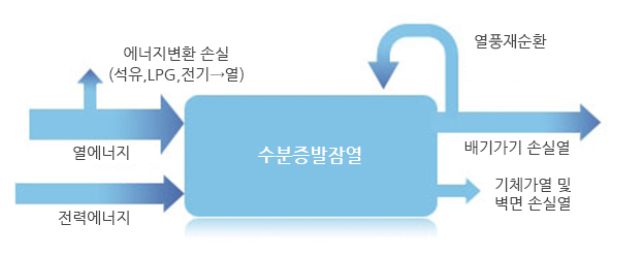Unlike industrial products, harvested agricultural products are “alive creatures” that consume their own nutrients through physiological functions such as respiration, transpiration, and ethylene production, and are easily altered. Therefore, to preserve taste and nutrients, a Drying process is required. Specifically, the drying process will remove the moisture. Although the moisture content at harvest varies depending on the agricultural products, it is generally about 30% for cereals and over 70% for fruit and vegetables. Therefore, a considerable amount of energy (latent heat of water evaporation) is required for drying, 50% for cereals, and 20% for fruit and vegetables. Therefore, it is the core of the drying technology to reduce the drying cost while preventing the deterioration of the quality of agricultural products. LifeNTech provides optimal drying solutions by studying the physical properties of agricultural products, analyzing the flow of hot air, and drying far infrared rays.
Example of Moisture Evaporation Latent Heat Calculation
The energy required to evaporate the water contained in agricultural products, that is, the latent heat of evaporation of water, is 10 to 30% larger than the latent heat of evaporation of free water and tends to increase as the water content decreases. This is because the lower the water content, the stronger the moisture defects in agricultural products.

Optimal Drying Design with High Quality & High Efficiency
Considering the energy balance of the dryer, the proportion of latent heat of evaporation that is used for drying is not high because a significant portion of the input heat energy is lost through exhaust gas, raw material temperature rise, gas heating, and gas wall. Therefore, to improve the drying efficiency, it is necessary to design such as reducing heat loss as much as possible and recirculating the exhaust gas. However, in general, the high drying efficiency does not guarantee quality. In some cases, the drying quality tends to deteriorate when efficiency increases. For example, when the hot air recirculation is increased, the heat loss decreases, but the drying time becomes longer, and the quality deteriorates. Therefore, to achieve high-quality, high efficiency drying, optimization of hot air temperature, air flow rate, and recycling of hot air is required.

Far-Infrared Drying
In addition to the design of the dryer, you can use relatively inexpensive LPG or electricity instead of oil as a heat source (Fuel) or use a far-infrared drying method instead of a hot air-drying method to reduce the costs. Far-infrared drying has the advantage of high efficiency by heating the object without energy loss due to heat transfer through radiation, but it also has difficulties in solving the drying deviation due to the limited penetration depth and straightness.
Installation Picture
